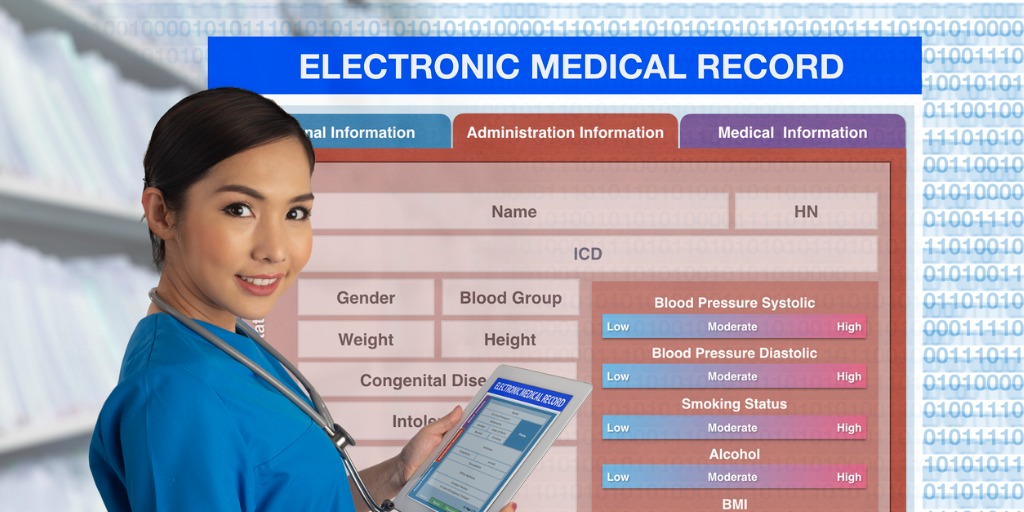Technology these days is amazing. It seems that whatever information we need is just a click away.
This is especially true in healthcare. Gone are the days of waiting for records from another provider or standing watch over the FAX machine to grab sensitive Personal Health Information (PHI) before someone who shouldn’t, sees it.
Although it’s a bit cliché, local Electronic Medical Records (EMR) and the bigger Electronic Health Record (EHR) landscape have revolutionized how we diagnose and treat patients. They have created integrated care.
How does it all work?
How does a physician know that Alex broke an arm last summer? How does the ER know that Cameron is taking a prescription medication when Cameron is incapacitated and cannot speak?
It’s the technological wizardry of HL7 and HL7 integration software.
What?
HL7 – Health Level Seven.
Accredited by the American National Standards Institute (ANSI) in 1994, HL7 is a set of international formatting standards used to transfer and share data amongst healthcare providers.
In very simple terms an HL7 software interface bridges the gap between the myriad of health IT platforms and allows information and messages to flow in multiple directions. Think of it as a Rosetta Stone for EMR systems. Regardless of the “language” of the healthcare software platform, the standard format of the patient data is sharable across providers.
Telling the Story
To demonstrate the role of HL7 in the big EHR picture here’s a fictional healthcare journey.
%20(5).png?width=560&height=324&name=The%20Role%20of%20HL7%20in%20Electronic%20Health%20Records%20(EHR)%20(5).png)
A patient, Chris, has an annual exam with a Dr. Physician. Prior to the exam Chris had some laboratory work done.
Arriving at the appointment Chris shares some PHI at check-in. The intake nurse takes vital signs and weight that are recorded directly into Chris’s local Electronic Medical Record (EMR).
During the exam the Physician accesses the laboratory results from the lab on a tablet to discuss them with Chris.
At the conclusion of the visit, Dr. Physician makes notes about the visit and writes an electronic script for a medication.
Laboratory results are shared to the Physician through an HL7 interface. Prescription and billing information are shared from the EMR to the pharmacy and insurance company through the HL7 Interface.
A few months later Chris is coming around third and slides into home for the game winning homerun. But, breaks an ankle in the process.
At the local emergency walk-in, the intake nurse accesses Chris’ PHI through the EHR that includes information from Dr. Physician’s office and takes some vital signs that are recorded directly into Chris’ EMR at the walk-in.
The attending physician sends Chris to Radiology for images of the ankle. Chris’s PHI is already there along with the x-ray order.
Chris’s digital X-Rays are archived in a Picture Archiving & Communication System (PACS) that is accessible by the Radiologist and the walk-in Physician. Notes from the Radiologist will be shared to Chris’s EMR at the walk-in and Chris’s EMR at the primary physician’s office.
Radiology accessed Chris’ PHI through an HL7 interface and will share the x-ray images and Radiologist’s findings using standard HL7 formats.
Next year at an annual physical, Dr. Physician asks about the ankle before Chris has an opportunity to share the information.
Messages sent through an HL7 interface ensure that providers have a complete picture of a patient’s health events.
At every stop in Chris’ fictional healthcare journey information is readily available through the EHR. This shared information is made possible with HL7 standard formatting and HL7 integration software that connects individual EMR’s, billing, health insurance, and specialists for truly integrated care.
HL7 also offers a framework that supports the data environment required for the growing number of personal health devices such as wearable heart monitors and insulin pumps that feed data into a patient EHR.
Pretty slick.
The Takeaway
Cloud based, server based, or hosted by a third party, EMRs/EHRs reduce errors, save time, and reduce cost in an industry laboring under staffing shortages, an aging population, and the rising cost of doing business.
CME’s experts are ready to help you take EMRs to the next level with EMR ready medical equipment.
EMR ready equipment such as vital signs monitors and scales format information ( e.g. blood pressure or weight) so it can be electronically transferred (sometimes through an integration engine) to a receiving product like an EMR.
An ECG is another example of medical equipment that is ready to exchange information with EHRs and PACS via LAN or Wireless LAN connectivity.
The immediate digital transfer of data from an EMR ready medical device to the patient record greatly reduces transcription errors. Additionally, the time required to update records is reduced, freeing staff for more patient focused tasks.
Contact us to discuss how EMR Ready medical equipment is the right choice for your healthcare setting.
About CME: CME Corp is the nation’s premier source for healthcare equipment, turnkey logistics, and biomedical services, representing 2 million+ products from more than 2,000 manufacturers. With two corporate offices and 35+ service centers, our mission is to help healthcare facilities nationwide reduce the cost of the equipment they purchase, make their equipment specification, delivery, installation, and maintenance processes more efficient, and help them seamlessly launch, renovate and expand on schedule.



